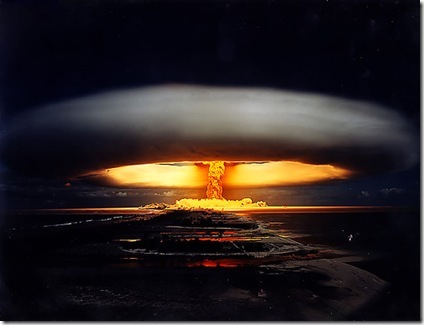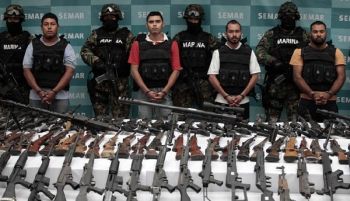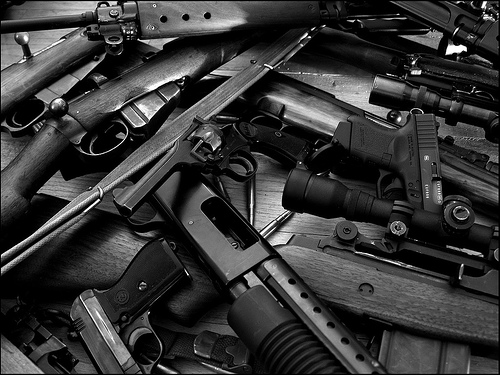Council on Hemispheric Affairs
December 23, 2011
Originally published in: http://bit.ly/s4MVuZ
Throughout the world, many regions have embraced the internet as a vital communication and business tool, and Latin America has been no exception. While demonstrably the expansion of internet usage has not rivaled that of the United States, Europe, or some Asian states like South Korea and Japan, the growth of the internet in the region continues at a steady tempo. Additionally, we are witnessing a rise in the importance of cyber security as cases of hacking and other cybercrimes proliferate.
Growth of the Internet in Numbers
In terms of numbers, the level of internet use in Latin America is certainly not as widespread as it has been in Europe or other highly developed regions, given constraints such as adverse economic indicators, poverty levels, and even geography, but the number of internet users in Latin America has grown over the past decade. Currently, the countries with the most internet users among Spanish-speaking countries in Latin America are Chile, Argentina and Venezuela.[1] According to a June 2011 report by AMPARO,[2] a project managed by the Latin American and Caribbean internet Addresses Registry (LACNIC), there are currently over 200 million users in Latin America and the Caribbean.
Throughout the region, there has been a pronounced surge not only in the number of homes with internet connection, but also in internet cafes. In an interview with COHA, a Peace Corps volunteer currently deployed in Honduras explained that, “in big cities, there are always a handful of places where you can get wifi. Also, virtually all mid sized towns have internet cafes, even some well-to-do small ones.” In addition, a September 13, 2010 article in Advertising Age quoted a poll by Nielsen’s “Emerging Digital Trends Report,” which explains that three in ten internet users from around the globe access the net from their phones. This behavior is most prominent in the Asia-Pacific region, where 71 percent of internet users have logged on from their phones in the last 30 days. This statistic is followed by 68 percent in Middle East-Africa-Pakistan (MEAP), 46 percent in Latin America, 37 percent in Europe, and 34 percent in North America.[3] Moreover, a recent study by Vision Mobile, reported by the Colombian daily El Tiempo, explained that Latin America is one of the regions that uses the least number of smart phones.[4] The report explains that the average in Latin America of smart phone-usage is 17 percent, compared to 27 percent, which is the global average, which means that there is ample opportunity for this technology to expand in this region.
It’s clear that internet usage will only continue to grow in the coming years as international telecommunication companies move in to capitalize on the relatively virgin Latin American market. In 2008, the Swedish-controlled international telecoms investor Millicom International Cellular S.A. launched 3G services in Guatemala, Honduras, Bolivia, Paraguay, El Salvador, and Colombia. According to a report by M2 Telecomworldwire, “Millicom said that it is providing the full portfolio of 3G services including high speed mobile broadband, internet access for mobile customers via laptop, TV on mobile handsets, music and video downloads and video calling.”[5]
Nevertheless, in some countries, some time will have to pass before they can reach the level of internet-connectivity that European and Asian states enjoy. The aforementioned Peace Corps member based in Honduras explained to COHA that:
Internet access in rural areas like where I live is confined mostly to offices. The only place that has internet where I live is at the alcaldia [the major’s office]. In any case the internet is mind-blowingly slow. Also, there are 4-5 people that have USB modems, which is how many people connect to the internet.
In another example of how telecommunications like phone and internet services have become a critical component of doing business in Latin America, the world’s richest man is Mexican national Carlos Slim, who owns América Móvil, Latin America’s largest mobile telecoms company. His empire now spans 200 companies in the construction, retail, tobacco, and media industries, and he gained further prominence in 2010 when he took over The New York Times; his fortune is estimated to be more than USD 63 billion by Forbes magazine.[6] América Móvil’s Mexican Telcel unit accounts for 70 percent of Mexico’s cell phone service and the Prodigy Infinitum is Mexico’s largest internet service provider.[7]
Latinos y la Web
The favorite sites for Latinos on the World Wide Web include social media sites like Facebook and Twitter, and communication programs like Hotmail and Skype. In an interview with COHA, a high school teacher in Jalisco, Mexico, explained that most of her students have Facebook profiles, and she even knows some primary school students who also have accounts on that website. There are also domestic spin-off versions of such sites; for example, Brazil has a popular social website known as Orkut. Other websites that are often visited include YouTube and national news and entertainment sites like Peru.com in Peru or major TV station websites like Televisa and TV Azteca in Mexico.
Twitter has also attracted a number of Latino users; particularly as sports personalities and other celebrities use it to interact with their fans. For example, Brazilian soccer star Ronaldo (born Ronaldo Luis Nazario de Lima – @ClaroRonaldo) currently has over 2.5 million followers. Meanwhile, Roberto Gomez Bolanos, a famous Mexican comedy actor popularly known as Chespirito, has over two million followers (@chespiritorgb). Also recently, a Mexican soccer team, Los Jaguares, replaced the names of the players on their jerseys with their Twitter handles.[8]
Moreover, various heads of state have created Twitter accounts to better communicate with their citizens. Venezuelan President Hugo Chávez is an avid Twitter user (@chavezcandanga ), as well as Presidents Juan Manuel Santos of Colombia (@JuanManSantos) and Ollanta Humala of Peru (@Ollanta_HumalaT). Certainly, there is the issue of whether the heads of state themselves regularly manage their Twitter accounts or if it is their press teams who are called upon to maintain them. Nevertheless, President Chávez boasts over two million followers, while the Colombian leader can brag about almost 500 thousand followers.
Some regional governments are even trying to use social media for health research. A July 16 article in New Scientist reports that thanks to software created by the Brazilian National Institute of Science and Technology, Brazilian researchers are using Twitter to track the appearance and spread of dengue diseases in the Portuguese-speaking country.[9] The article, explains that:
Dengue outbreaks occur every year in Brazil, but exactly where varies every season. It can take weeks for medical notifications to be centrally analyzed, creating a headache for health authorities planning where to concentrate resources. Using Twitter messages could mean a much faster response.[10]
Then again, there are some utilities brought about by the internet that have not yet caught on in Latin America. For example, e-purchasing is only slowly beginning to gain a foothold in the region as compared to similar e-businesses in the U.S. and Europe like eBay or Groupon. Some attempts at e-businesses have penetrated Latin America, but with limited success; there’s a Peruvian e-business known as iQuiero, (www.iquiero.com) where users can buy anything from washing machines to cake and bottles of whiskey and have it delivered to their homes, but its delivery area is limited (for example, for food delivery, you can only order if you’re in the country’s capital, Lima). Regarding Mexico, there’s a website called Mercado Libre (http://www.mercadolibre.com.mx/) which is essentially a Mexican version of eBay, where individuals as well as stores can sell products at reduced prices. Although other regional countries have yet to join the wave of online business, this does not preclude the potential for the growth of this sector in the coming years.
Brazil and the Internet
A June 2011 article in the Financial Times explains that “[i]n 2001 there were around 47m internet users in the BRIC[S – namely Brazil, Russia, India, China and South Africa] economies, now there are 759m; the number of users has grown 16 times in 10 years. However, the penetration of internet usage in the [BRICs] countries still only sits at 31 per cent which is paltry compared to the US at 77 per cent.”[11] Brazil officially had 67 million internet users in 2010, though experts argued that the number was probably closer to 73 million.[12] Brazil also has the second-highest number of Twitter users, surpassed only by the U.S. The country has a growing number of Facebook users as well, but the social media website known as Orkut remains a popular social networking site. In addition, regarding e-businesses, there is a website called Peixe Urbano (http://peixeurbano.com/) which a sort of Brazilian version of Groupon, in which subscribers receive via e-mail offers for stores and other services.
The Rise of Hacking and other Cyber Crimes
Naturally, criminals regard the rise of the virtual world in Latin America as another plane to which they can expand their sphere of operations. Nevertheless, it is hard to determine which country is most affected by issues like cyber fraud, the infection of individual computers with malicious code and other issues, since it is often not reported when it occurs to individual users. One recent report in the Mexican daily Noroeste.com argues that Mexico suffers the most cybercrimes in Latin America.[13] Nevertheless, the aforementioned AMPARO report, citing data provided by Symantec (a security software company) stated that Brazil, Mexico and Argentina make up the top three regional countries that suffered the most cyber attacks in 2009 and 2010.
Possibly having an even greater impact, hacking government web pages has become a growing problem due to the nationalistic persuasion of some of the hackers. For instance, Peruvian and Chilean hackers have a history of taking control of each other’s government websites, particularly before and after sporting events. In 2007, the Peruvian hacker group known as RootGroup attacked the websites of the Chilean Soccer Association, the Chilean Office for National Emergencies, and the National Council for Culture and Arts.[14] Later, in 2009, amidst tensions between the two countries over a spy case, Chilean hackers took control of the official website of the Peruvian government (http://www.peru.gob.pe/), posting nationalistic insults and the Chilean national anthem.[15] More recently, in August 2011, Anonymous and Colombian hackers attacked the websites of the Colombian Ministry of Interior, the official government portal, and the now defunct intelligence apparatus, the Departamento Administrativo de Seguridad (DAS – Administrative Department for Security). The two associations declared that the attack, called “Operación Defensa” (Defense Operation), was to protest the Colombian government’s censorship.[16] Also, in June of this year, Brazil had several government websites hacked, “and private sector websites knocked offline and their Army personnel database was hacked with information posted online.”[17] It seems that a Brazilian hacking group, associated with the international hacker association LulzSec, was responsible.
A critical issue here comes down to who exactly is carrying out these cyber crimes. Are they just lone operations carried out by small groups of hackers that take control of a particular website for nationalistic purposes? And what about stealing bank information and other financially damaging crimes? Currently there is a major internet virus called SAPZ in Peru, which steals the user’s personal data, including their bank account information.[18]
Arguably when these crimes reach a certain level of complexity and goals, they are no longer just hacker groups looking for a quick profit, but they may be working for even bigger organizations. A July report by Southern Pulse, an online defense news and analysis website, explains that:
[G]roups including [the Mexican drug cartel] La Familia and Brazil’s PCC [Primeiro Comando da Capital – First Command of the Capital, a Brazilian criminal organization] have acquired black market hackers who can assist with committing crimes that bring in cash. Even MS-13 [an international criminal gang centered in Central America], not often considered a computer-savvy group, is said to have been involved in various low-level malware schemes in Central America for stealing bank identification information and manufacturing fake credit cards.[19]
Moreover, the war in Mexico against drug cartels has reached the virtual world. A popular blog, known as “Blog del Narco” (Narco’s blog – http://www.milcincuenta.com/), reports on the most recent attacks carried out by Mexican criminal organizations. The Zetas, one of Mexico’s most powerful cartels, have had several deadly run-ins with members of the virtual world. In early November the decapitated body of a male was placed by a Christopher Columbus monument in Nuevo Laredo. The person was later identified as “el Rascatripas,” the moderator of an anonymous internet forum; it’s believed that he was murdered by the Zetas.[20] This cartel also has had a confrontation with Anonymous, as the hacker group posted a video online threatening the cartel with retribution if they did not release one of its kidnapped members.[21] Apparently the Zetas released the member and Anonymous did not carry out their threat.
A similar development is occurring in Guatemala. According to the daily elPeriodico, a number of blogs have appeared that identify alleged members of the Mara Salvatruchas; like Justicia Final (http://justiciafinal.blogspot.com/) and La Calaca de la Muerte (http://lacalacadelamuerte.blogspot.com/). The report goes on to speculate that the blogs are maintained by rival gangs, since only Mara 13 members are mentioned.
Finally, there also have been legal disputes regarding the content of the internet in Latin America. For example, the Argentine entertainer Virginia da Cunha brought a lawsuit against Google and Yahoo! Argentina, alleging that the two search engines damaged her “moral character” by displaying her name and photos of her when users carried out sex-related searches. A lower court originally ruled in favor of the Argentine in 2009, and ordered “the companies to pay damages and remove all sites containing sexual, erotic and pornographic content that contained the name or image of Ms. Da Cunha from its results.”[22] Nevertheless, in August 2010, a higher appeals court overturned that decision, stating that “the 2-to-1 appeals court ruling […] said the firms could be held liable for defamation only if they were made aware of clearly illegal content and were negligent in removing it.[23]
Cyber-Security
One issue about these rising cyber crimes is that regional states have been slow in prosecuting the culprits. Regional police forces lack the kind of ‘cyber police’ needed to fight crime in this kind of environment. In an interview to BNamericas, Stu Bradley, director of the fraud department and financial crimes of the U.S. software company SAS, explained that hackers from China and Russia are focusing more of their operations in Latin America due to the underdeveloped practices employed to combat this type of crime.[24] He also explained that “one of the difficulties in Latin America is that there aren’t many organizations that combat [cyber]fraud.”[25]
One exception to the rule is Brazil. In August 2010, the Brazilian army created a cyber-defense wing known as the Centro de Defesa Cibernética do Exército (Army’s Center for Cybernetic Security), with General José Carlos dos Santos as commander.[26] The center currently has twenty officers working there, but it aims to have thirty by year’s end. In an interview with Revista Época, a Brazilian magazine, General Santos explained that the hiring of hackers to work for the Center “is a possibility.”[27] The Brazilian military officer went on to say that “we have ways to recruit by showing our work and giving the perspective of a challenging and interesting career.”[28] He also said that beginning 2012, it will be mandatory for young Brazilian military officers to learn about information technology, and this will also be applied in the training of sergeants.[29]
E-Challenges are Real Challenges
The aforementioned July 2011 analysis on cyber crimes in Latin America that was published by Southern Pulse explains that “the cyber domain is adding new complexity to the serious criminal threat facing Latin America at a time when the region is under pressure to focus on the more physical security threats such as high murder rates and illicit trafficking.”[30] In that sense, cyber crimes comprise the latest security issue that Latin American law enforcement agencies will have a problem coping with, as the region is already filled with more tangible security threats like narco-terrorism, the spread of the Mexican cartels, and other types of violence. It is doubtful that regional police and military forces will have the budget, personnel, or technology to give crimes in the virtual world the same priority as those in the physical world, though the Brazilian CDCE center is an initiation that should be repeated elsewhere. Certainly, one option would be for Latin American governments and major businesses, such as banks, to outsource their virtual security needs to international software companies. But this could be a costly decision, and it would be better if governments delve into their nation’s youth pool for future e-defense specialists, like the Brazilian army appears to intend to do.
While not as widespread as in other parts of the world, the internet has a strong presence in Latin America, and this will only continue to grow as most of the region enjoys an economic boost and the younger generations grow more and more accustomed to having access to laptops, iPhones, and simply being part of the globalized virtual world. It is not just natural, but also a priority, that cyber-security initiatives should maintain the same pace as the quickly spreading virtual world in Latin America.








.jpg)





